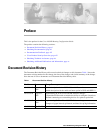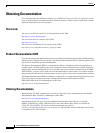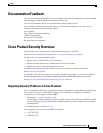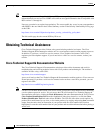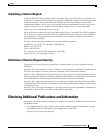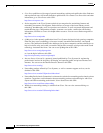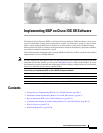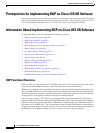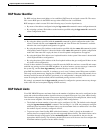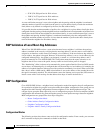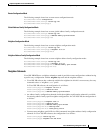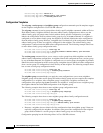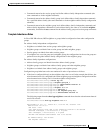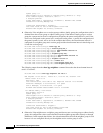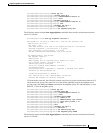
Implementing BGP on Cisco IOS XR Software
Prerequisites for Implementing BGP on Cisco IOS XR Software
RC-2
Cisco IOS XR Routing Configuration Guide
Prerequisites for Implementing BGP on Cisco IOS XR Software
To use this command, you must be in a user group associated with a task group that includes the proper
task IDs. For detailed information about user groups and task IDs, see the Configuring AAA Services on
Cisco IOS XR Software module of the Cisco IOS XR System Security Configuration Guide.
Information About Implementing BGP on Cisco IOS XR Software
To implement BGP, you need to understand the following concepts:
• BGP Functional Overview, page RC-2
• BGP Router Identifier, page RC-3
• BGP Default Limits, page RC-3
• BGP Validation of Local Next-Hop Addresses, page RC-4
• BGP Configuration, page RC-4
• No Default Address Family, page RC-15
• Routing Policy Enforcement, page RC-16
• Update Groups, page RC-18
• BGP Best Path Algorithm, page RC-18
• Multiprotocol BGP, page RC-21
• Route Dampening, page RC-23
• BGP Routing Domain Confederation, page RC-24
• BGP Route Reflectors, page RC-24
• Default Address Family for show Commands, page RC-27
BGP Functional Overview
BGP uses TCP as its transport protocol. Two BGP routers form a TCP connection between one another
(peer routers) and exchange messages to open and confirm the connection parameters.
BGP routers exchange network reachability information. This information is mainly an indication of the
full paths (BGP autonomous system numbers) that a route should take to reach the destination network.
This information helps construct a graph that shows which autonomous systems are loop free and where
routing policies can be applied to enforce restrictions on routing behavior.
Any two routers forming a TCP connection to exchange BGP routing information are called peers or
neighbors. BGP peers initially exchange their full BGP routing tables. After this exchange, incremental
updates are sent as the routing table changes. BGP keeps a version number of the BGP table, which is
the same for all of its BGP peers. The version number changes whenever BGP updates the table due to
routing information changes. Keepalive packets are sent to ensure that the connection is alive between
the BGP peers and notification packets are sent in response to error or special conditions.




